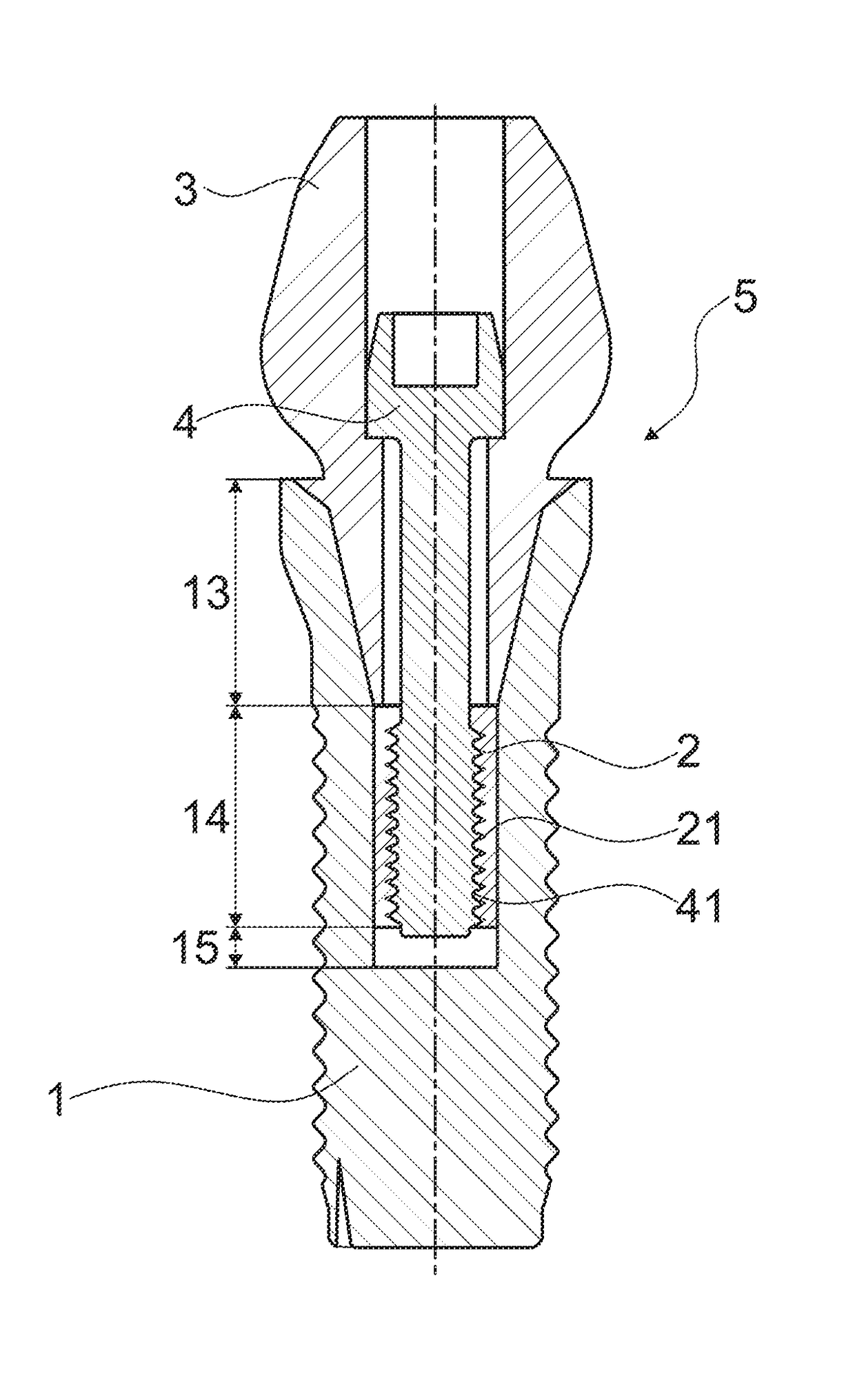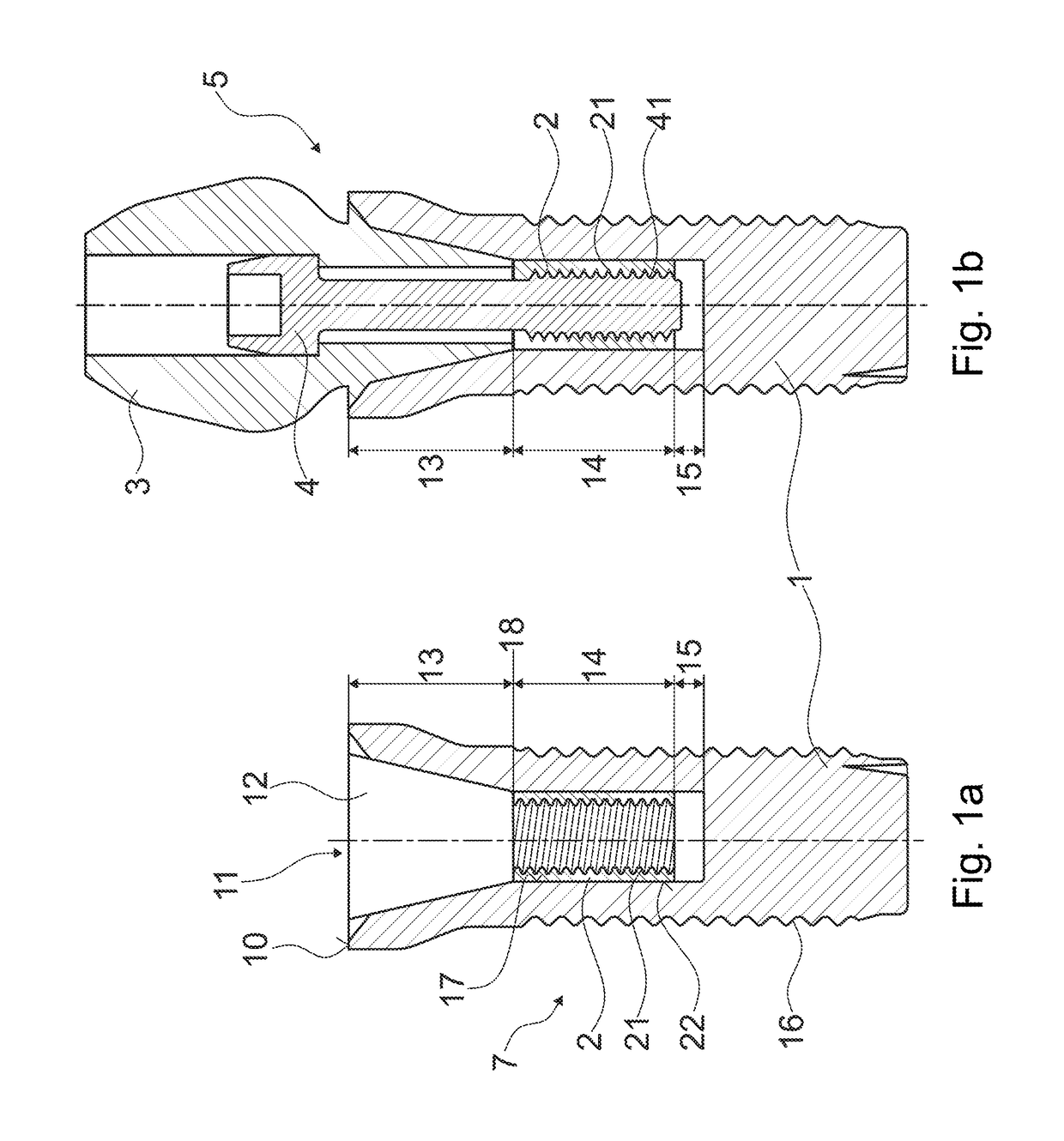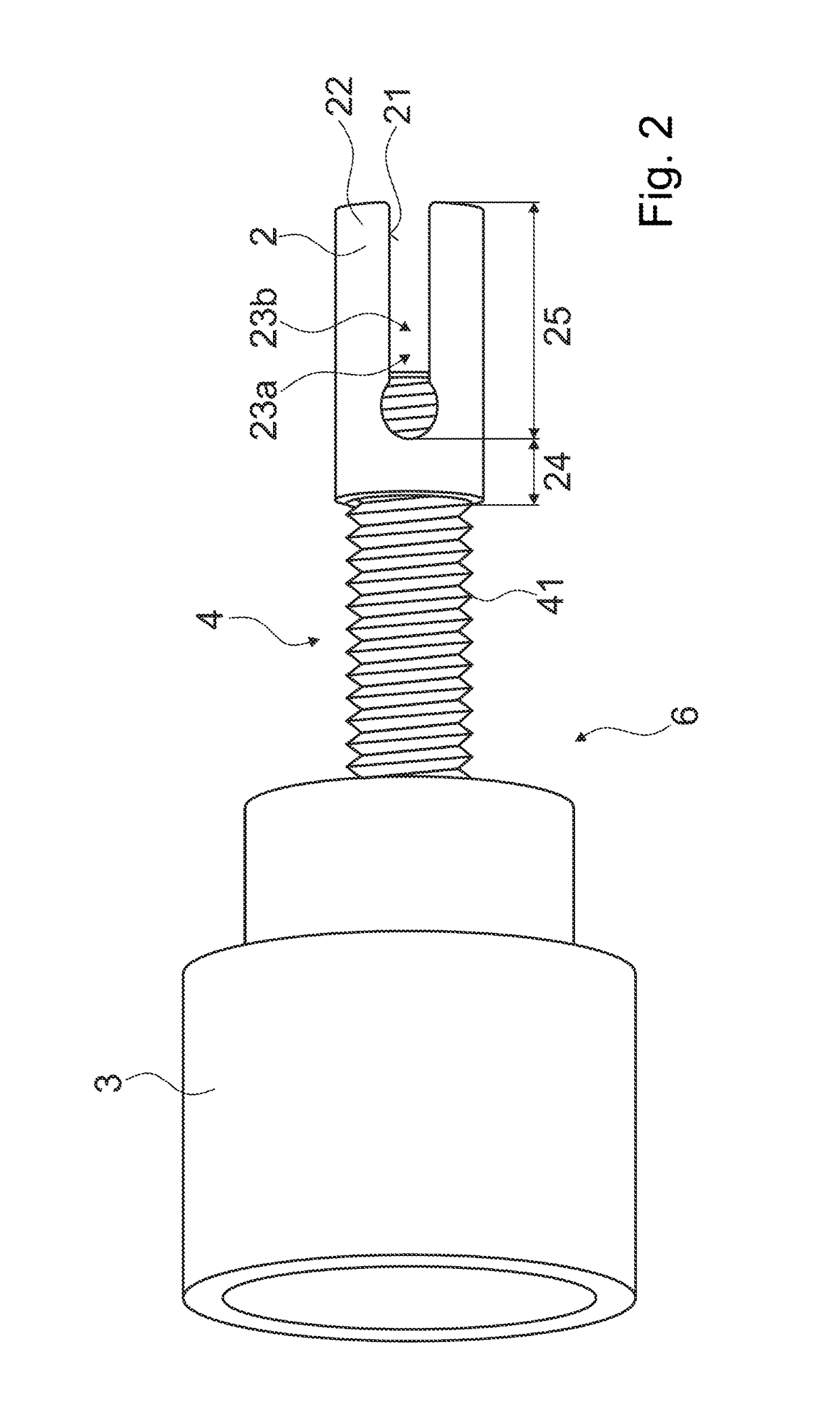Dental implant system with ceramic implant
a technology of ceramic implants and implants, applied in dental implants, dental surgery, medical science, etc., can solve the problems of brittle ceramic materials, disadvantages more expensive manufacturing methods of ceramic implant systems, so as to improve the effect of the dental implant system
- Summary
- Abstract
- Description
- Claims
- Application Information
AI Technical Summary
Benefits of technology
Problems solved by technology
Method used
Image
Examples
Embodiment Construction
[0075]FIGS. 1a-1b show an exemplary dental implant system 5. A set 7 with a ceramic implant 1, which is essentially implanted into the bone, and with an inserted insert element 2 are shown in FIG. 1a. The exemplary dental implant system is shown in the connected condition with the ceramic implant 1, the insert element 2, an abutment 3 and an abutment screw 4 in FIG. 1b. The exemplary ceramic implant 1 has a proximal region with a recess 11 with a proximal opening 12. The recess 11 in the axial direction includes three sections: a proximal section 13, an insert section 14 and a distal end section 15. The exemplary ceramic implant 1 includes an outer thread 16.
[0076]The proximal section 13 serves for receiving a distal region of the abutment 3 and is formed as a cone widening in the proximal direction. Of course, the proximal section 13 of the recess 11 of the ceramic implant 1 can be differently shaped with a large degree of freedom, for example cylindrically instead of conically or ...
PUM
| Property | Measurement | Unit |
|---|---|---|
| height | aaaaa | aaaaa |
| radius | aaaaa | aaaaa |
| pull-out force | aaaaa | aaaaa |
Abstract
Description
Claims
Application Information
 Login to View More
Login to View More - R&D
- Intellectual Property
- Life Sciences
- Materials
- Tech Scout
- Unparalleled Data Quality
- Higher Quality Content
- 60% Fewer Hallucinations
Browse by: Latest US Patents, China's latest patents, Technical Efficacy Thesaurus, Application Domain, Technology Topic, Popular Technical Reports.
© 2025 PatSnap. All rights reserved.Legal|Privacy policy|Modern Slavery Act Transparency Statement|Sitemap|About US| Contact US: help@patsnap.com



